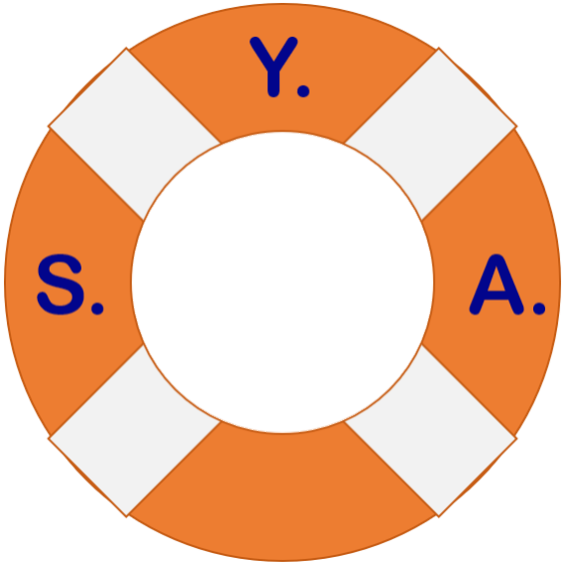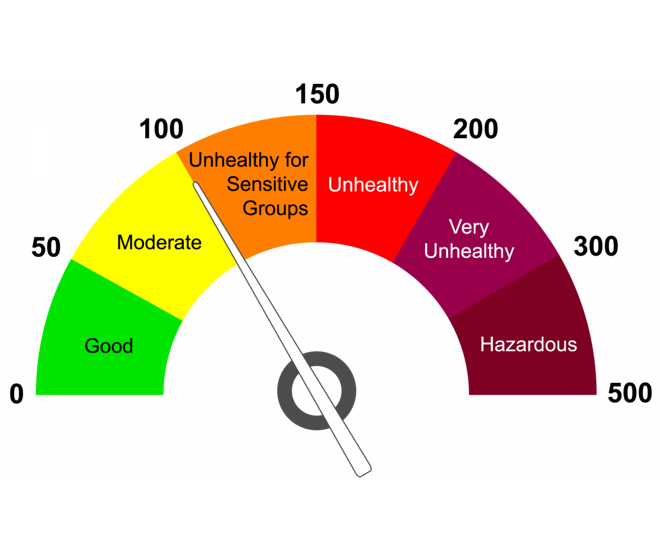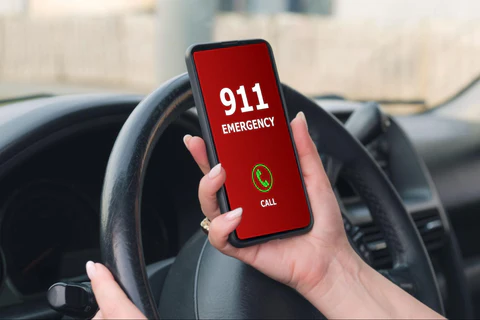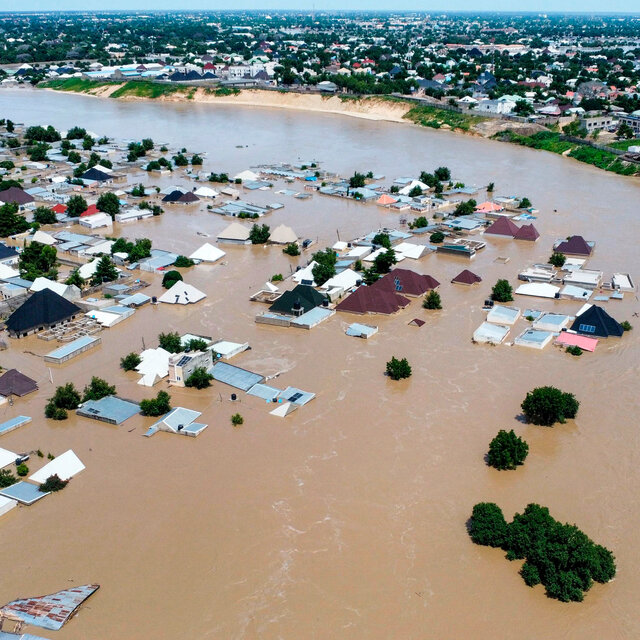Air quality
One of the things that most of us take for granted is breathing. You obviously could not live if you did not do it. The problem is we are nowhere near as concerned as we should be as to what we are breathing. Just because my lungs get oxygen from the air does not mean they are not also inhaling other, more harmful substances. These substances can, over time, lead to severe health issues and even death, but an air purifier can help.
Particulate matter is everywhere
Particulate matter are the microscopic particles we breathe in every day. There are 2 classifications that are tracked for air quality: PM2.5 and PM10. These describe the size of the particles in micrometers.
These (mostly) invisible particles are in abundance in our air that we breath. It is in the wildfire smoke, greenhouse gas emissions, smog and even in the air that looks clear. It aggravates those with underlying health conditions. Especially those with asthma, allergies or other breathing issues, including those that come down with COVID.
For more information on Particulate Matter, see this page on the US EPA website.
When PM2.5 gets bad
While I was aware of PM2.5 before COVID, I didn’t really think about it much before I moved to Utah. It was here that I experienced days of unhealthy air quality. There are two very noticeable events in Utah that visually signifies unhealthy air quality:
- The inversion along the Wasatch Front that traps smog in the winter.
- The wildfire smoke that blows in from California and other western states during the summer.
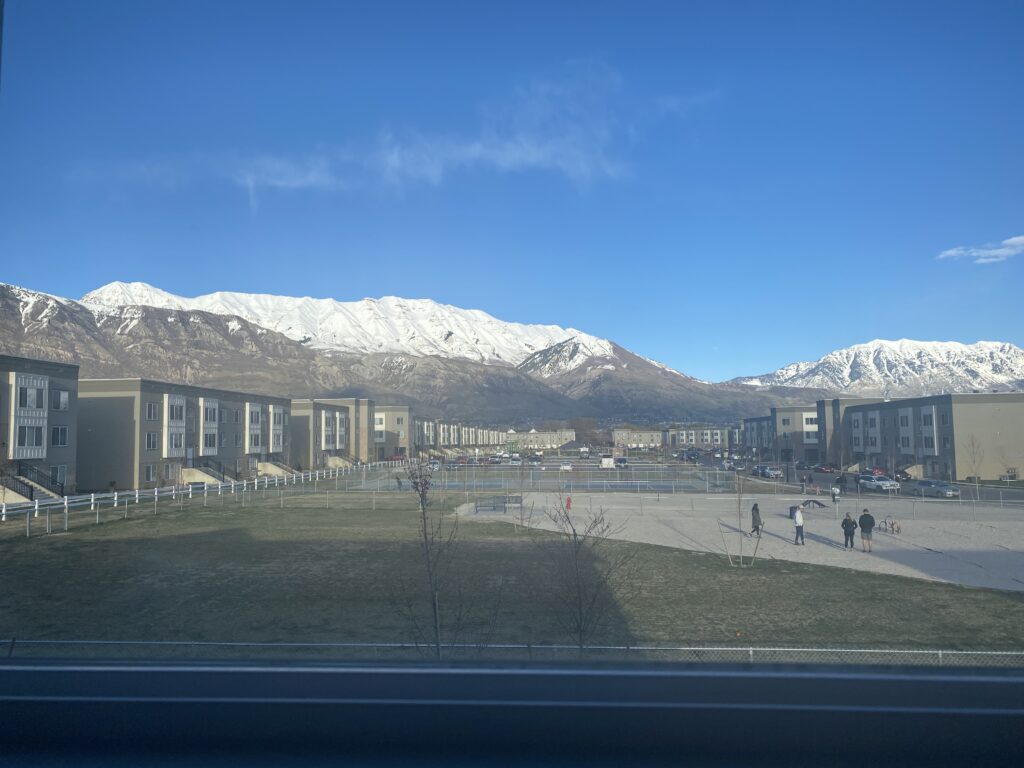
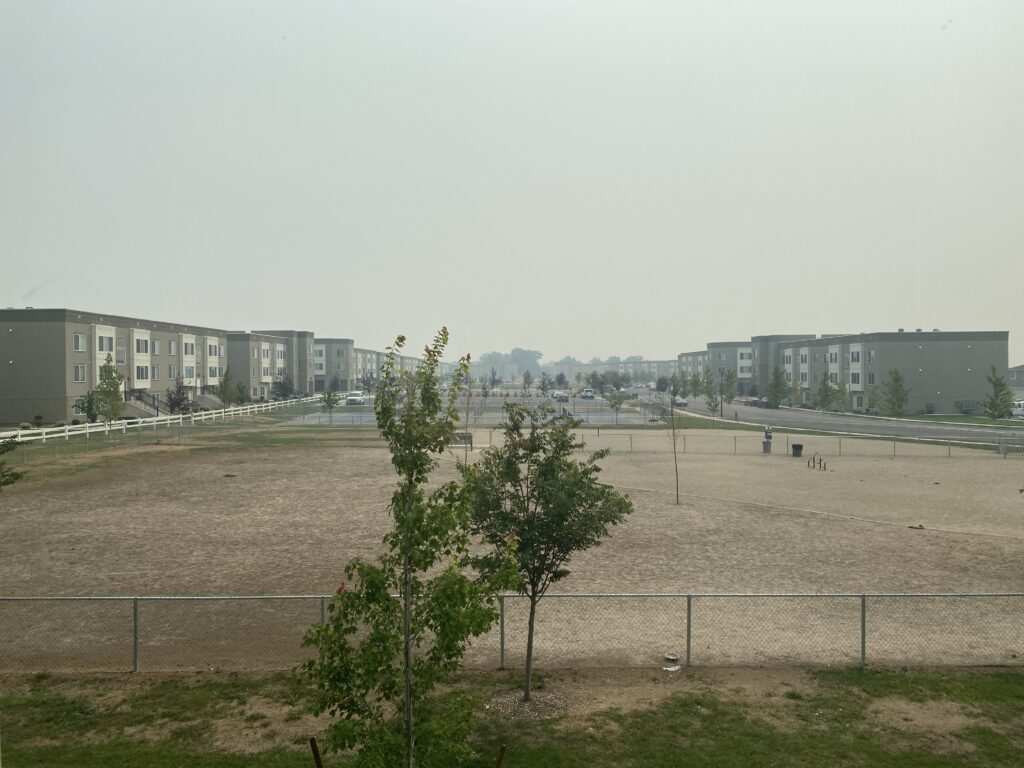
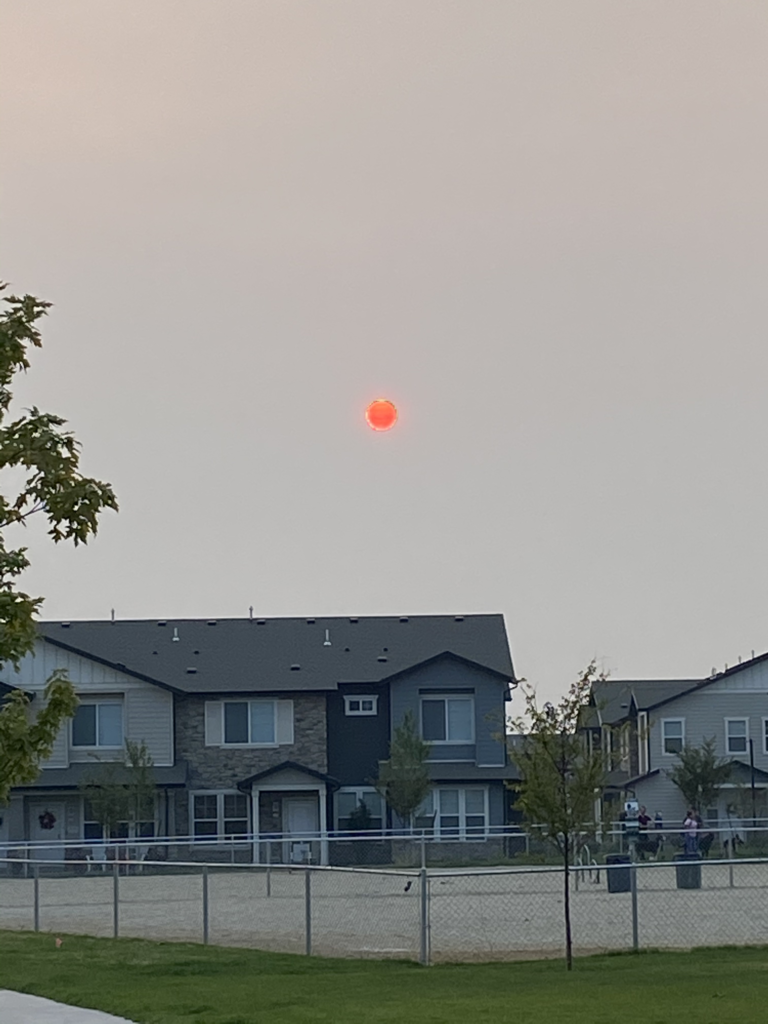
Tracking outdoor air quality
Once the wildfire smoke moved in, I started to be more concerned about the air I was breathing. You could not only see it and smell it but it gets in your clothes after being outside briefly and trails in behind you when you walk into the house.
I downloaded the free AirVisual air quality app by IQAir so I could see what the PM 2.5 count was at any given point. There are hundreds of sensors throughout the state tracking air quality 24/7. Now I keep an eye out when it is unsafe to be outside without a mask/respirator to filter out the particulate. Today is one of those days.
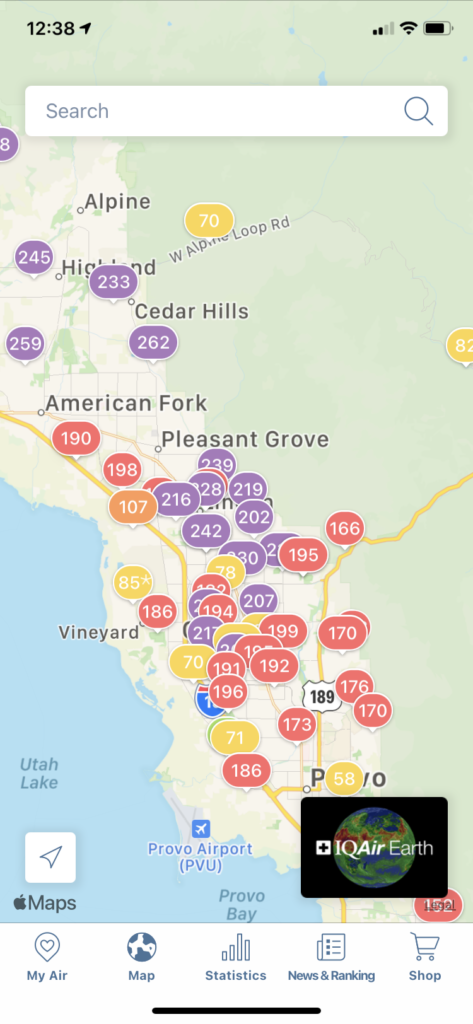
This is the worst it has gotten in the two years I have lived here.
Air Quality Index Levels
There are six levels of air quality on the scale as seen below. Prior to today, the worst the air ever got by my house was in the orange category. Today the highest recorded at the sensor nearest my house reached a reading of 210 which puts it in the purple category of Very Unhealthy for anyone.
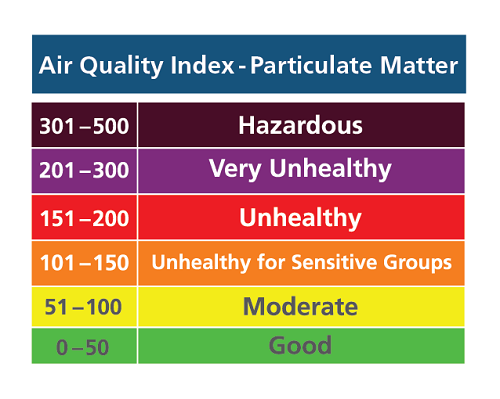
Many weather apps have added air quality readings as well like Apple’s default Weather app on iOS.
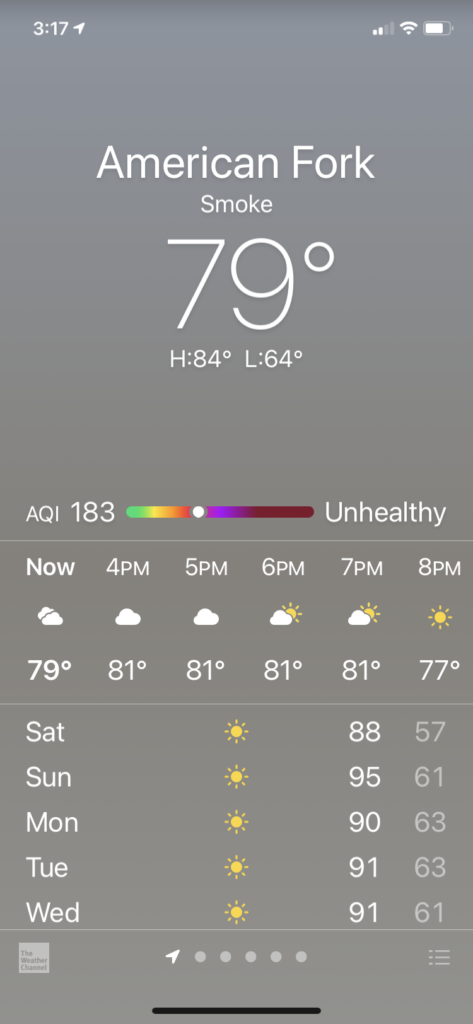
Indoor air quality
But what about indoor air quality? It turns out that while the outdoor air can get bad, you really need to pay attention to indoor air quality. Most homes and commercial buildings do not have medical grade air filtration systems, nor are they hermetically sealed to prevent outside contaminants from working their way inside through all the various cracks and crevices.
Many recycle and distribute dirty air and unless you open your windows regularly and flush out some of the bad air, you are just breathing it constantly. Most commercial office buildings cannot open their windows so they are reliant on their air handling systems to circulate fresh air.
Do you know what the PM2.5 counts is for your home, office, school, store or other building you spend a lot of time in? There are air quality sensors you can buy to tell you when the air inside is unhealthy, but then what? This is where an air purifier can help.
What can filter out PM2.5?
While respirators, N95 or KN95 masks can filter out 95% of those PM2.5 molecules from the air we breathe (which is where the 95 in the name comes from), you are not going to wear one of those all the time inside your house. While the N95/KN95 masks filter the particulate out of the air, they are hot and difficult to breathe in for long periods of time, especially if you are exerting yourself physically.
Respirators on the other hand are a little easier to breathe in and designed for longer periods of use. They have replaceable filter cartridges on the outside unlike the single use, disposable N95/KN95 masks. These are what construction workers wear to filter out hazardous chemicals and particulate in some situations, like spray painting, installing insulation, etc.
This is where HEPA filters come into play because they can also filter out PM2.5. These can be purchased for your furnace but you should check to make sure your unit can handle it first. The blower fan that circulates air may not be able to use a HEPA filter. HEPA filters can also be found in an air purifier. Even the climate control system in my 2013 car uses a HEPA filter in it to clean the air it circulates through the cabin.
What about the air filter in my furnace?
While all homes, business, trains, buses and planes all have air handling systems with air filters to circulate heat and air conditioning, unless it is a HEPA filter, it is not filtering out PM2.5. My experience also tells me that the filters more often than not are way paste their useful life.
Next time you are on a bus, plane or train or in a hotel, look at the air return/intake (not the vents). I usually see a noticeable buildup of black dust/dirt particles around the intake. The filter which should be white is usually black. This not only prevents proper cleaning of the air, but also makes the system work harder to circulate air causing it to wear out or break down much sooner than it would have if properly maintained.
Thank you Costco
Around the time I was researching and educating myself about air quality last year, I was at my local Costco picking up some supplies when I came across and endcap sale for a smart air purifier. I had not heard of the company before, but a quick google search on my phone showed that this particular unit had high reviews online. I also found out that it was selling on average for $80-$100 more than what Costco was selling it for. SOLD! And into my cart it went. Of all the impulse buys I have made in my lifetime, this is definitely in the top 10 of actually being worth it.
My WINIX Smart C545
The unit I got is a WINIX Smart C545 air purifier. The unit itself is not that big and does not take up a lot of space. This particular one is designed for a medium sized space but more than meets my requirements. In the summer months when air quality gets bad, I move it out of back corner where it normally sits to a more central location so it can more evenly clean the air.
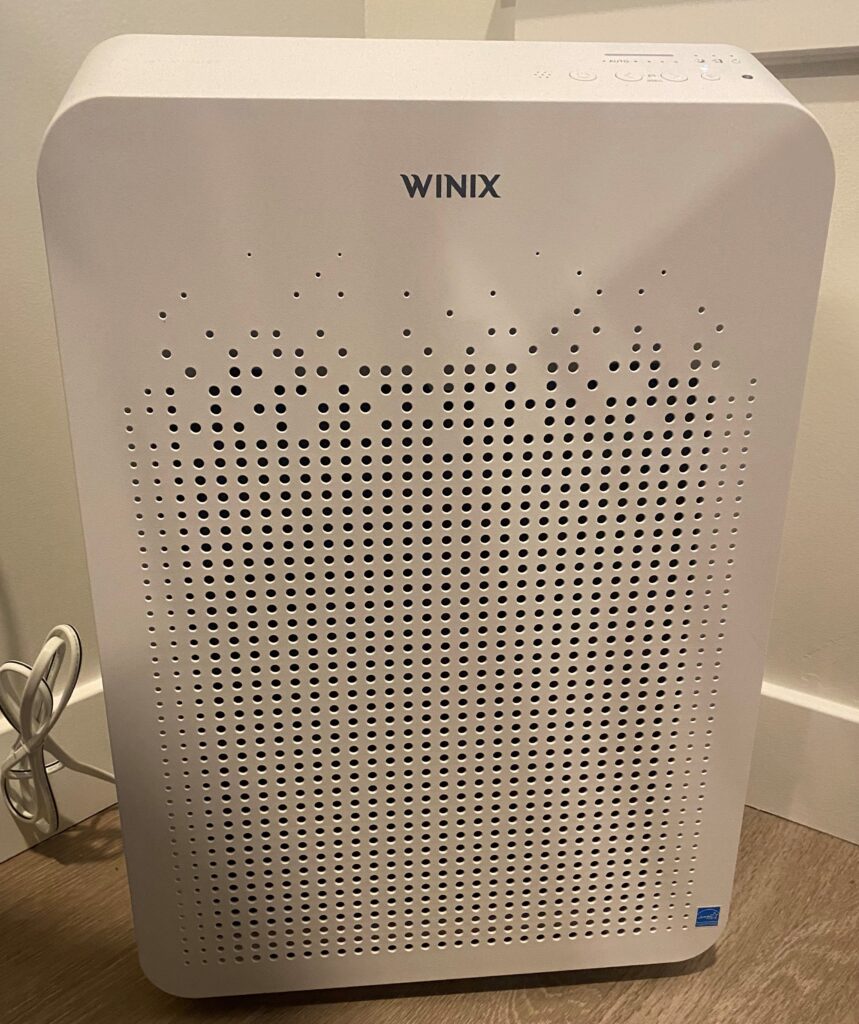
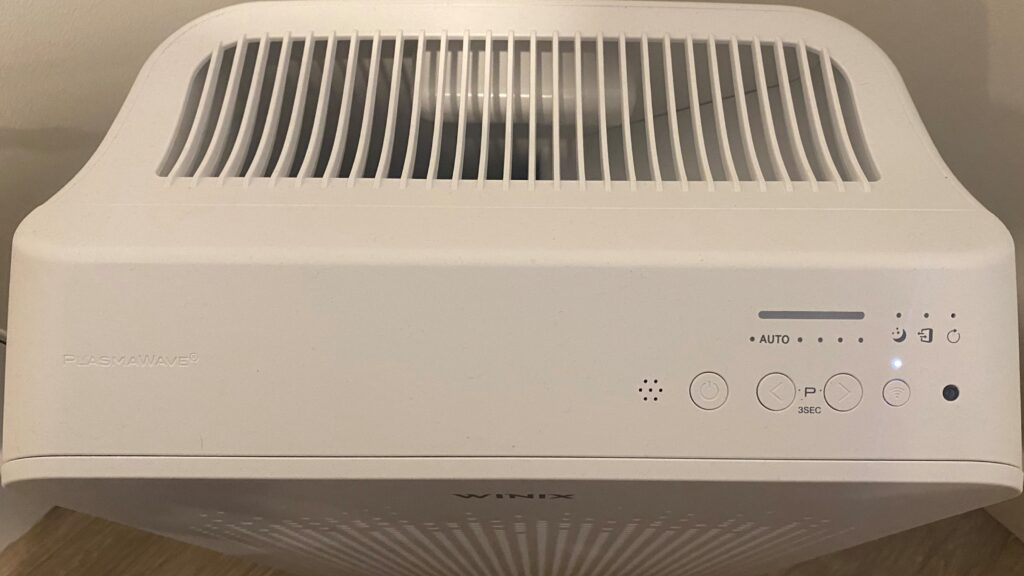
Air Quality Indicator
In addition to looking on the app, I can see visually what the air quality is inside when the unit is on. Blue indicated good air quality, yellow is fair and red is poor. Since I have it in auto mode, it automatically adjusts the fan speed based on the air quality.
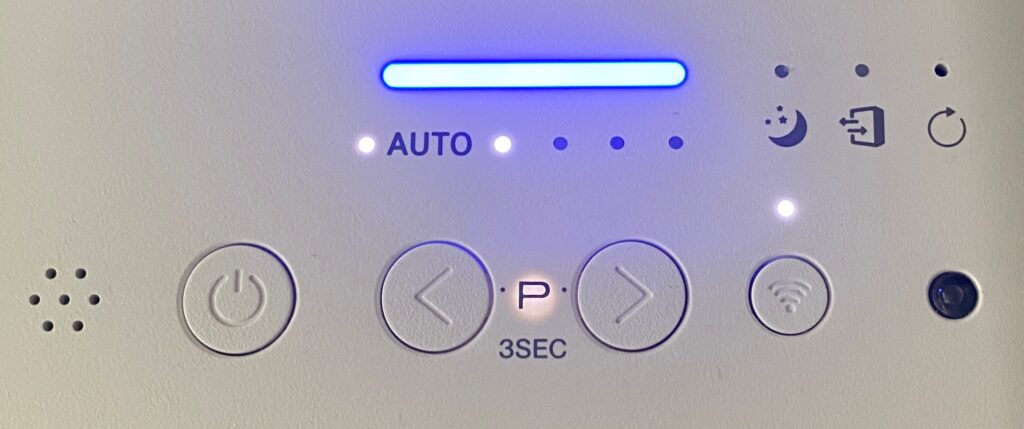
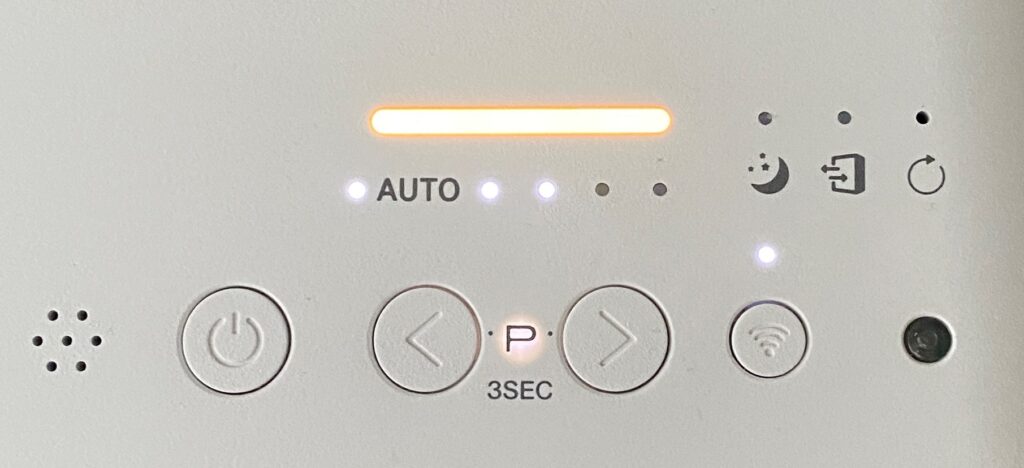
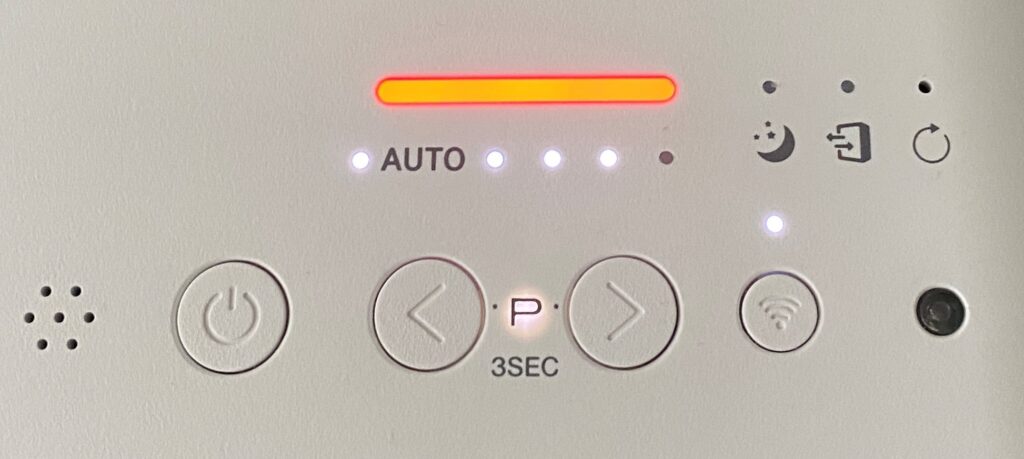
What makes it so ‘smart’
It is ‘smart’ because it connects to your home wi-fi and has an app you can install on your phone to control it. Monitor your air quality, filter life, schedule and even connect it to Amazon’s Alexa if you like.
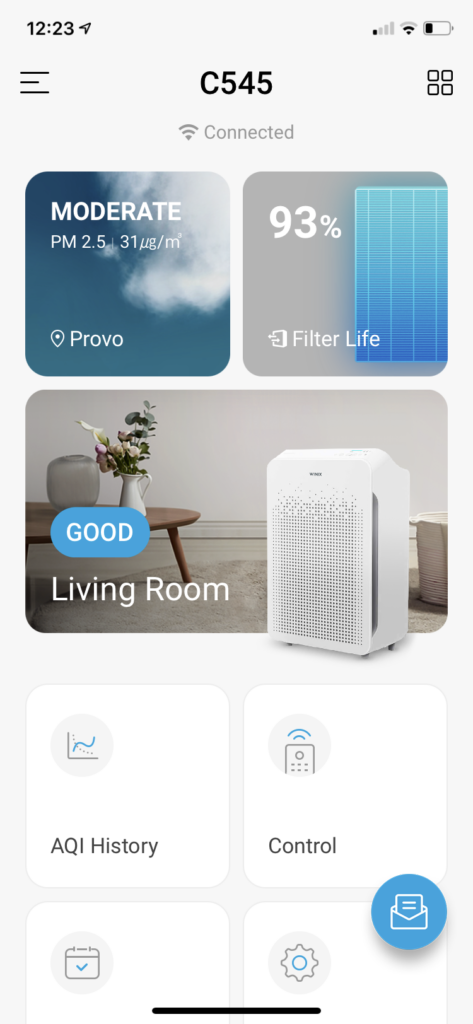
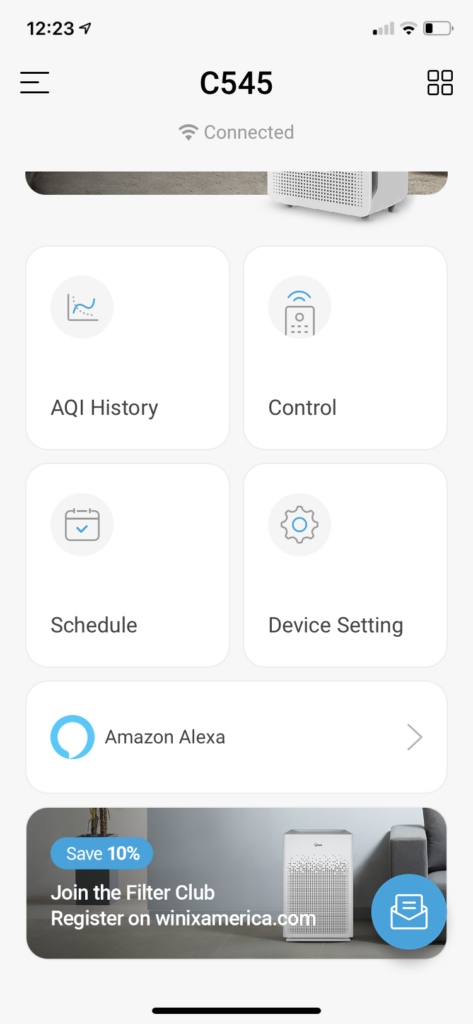
Control it from the app on your phone
The air purifier can be manually controlled from the panel on the unit or from the app on my phone. I prefer to set an automated schedule (see next section) so that I really do not have to do anything.

Create your own custom schedule
On normal days, I have mine set to come on 3 times a day for 30 minutes and this is sufficient to clean the air. If we are having a particularly bad air quality day, I may have to run it manually another time or for a longer period to ensure the indicator turns blue.
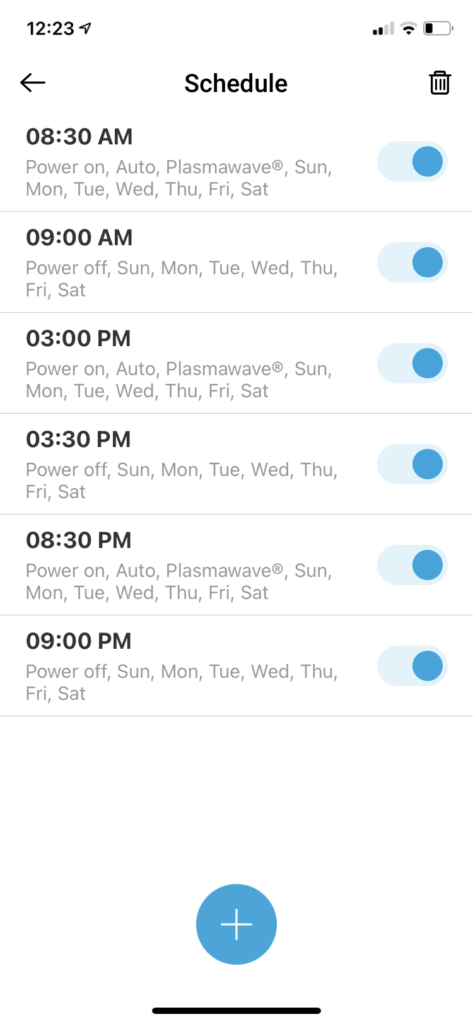
View Air Quality History
This page shows me the air quality inside and I can compare it to the outside air quality. It defaults to Daily, but I can change it to Weekly or Monthly to see a longer trend line.
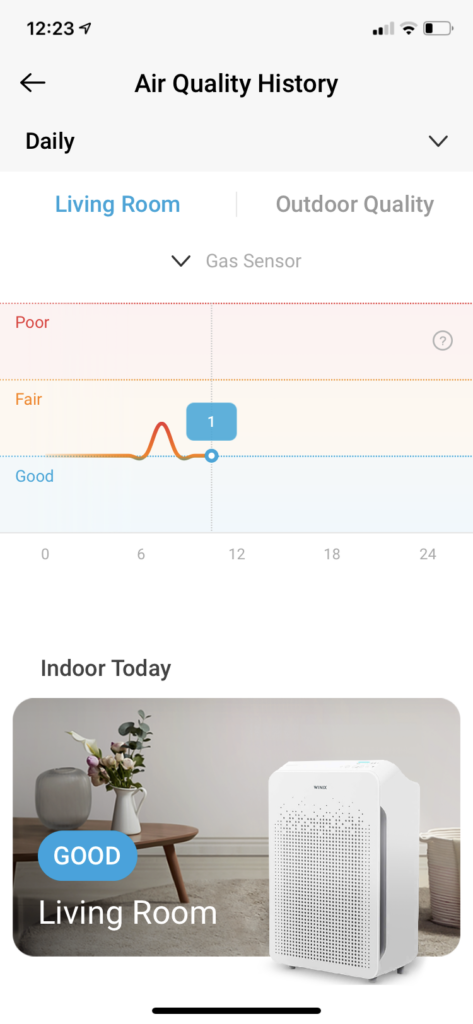
3-Stage filtering plus PlasmaWave
This particular unit has 3 filters and an additional technology:
- A washable and reusable pre-filter screen that catches the bigger dust bunnies and particles in the air.
- An activated carbon filter.
- A True HEPA filter.
- PlasmaWave technology that creates Hydroxyls which can reduce the presence of viruses and bacteria in the air. Think of it like a microscopic bug zapper if you prefer.
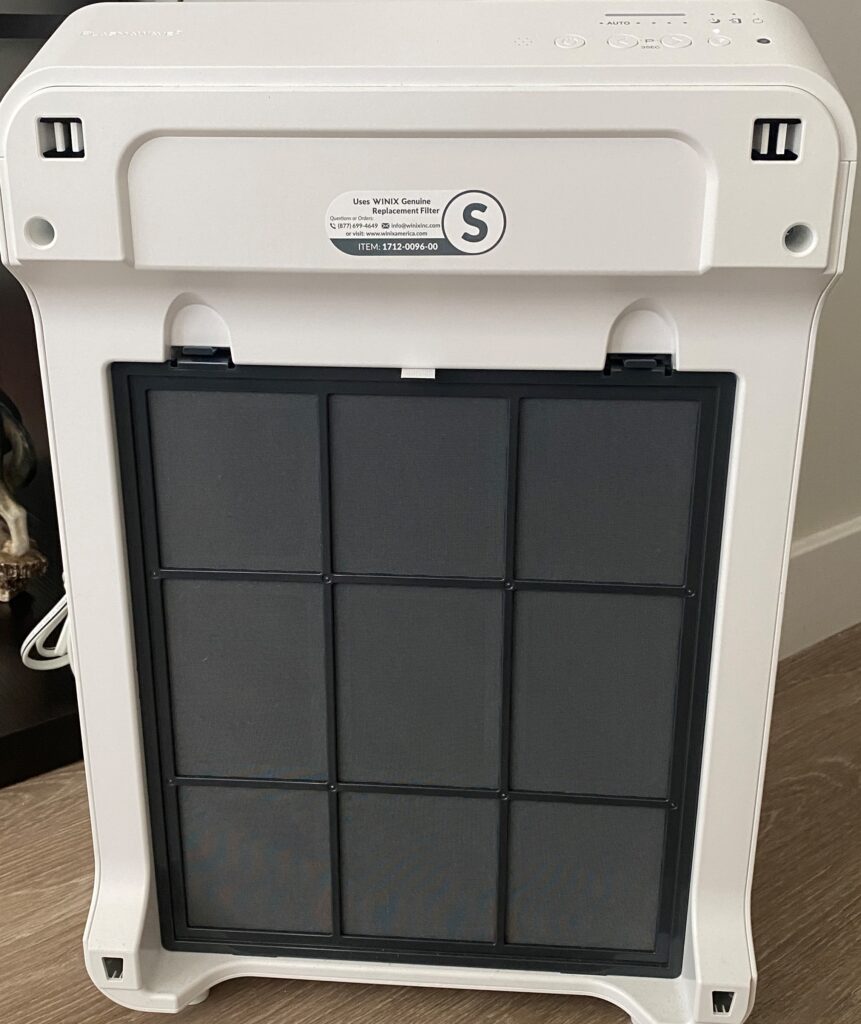
Extra Filters – YAY!
Because it is Costco, the unit came with additional replacement filters (they claim 2-years’ worth). It was a great deal. You got a total of 2 True HEPA filters, 8 Activated Carbon filters and the reusable pre-filter screen. If you look back above at the screenshot of the app dashboard, you’ll see that even after a year of use, my True HEPA filter is still 93%.
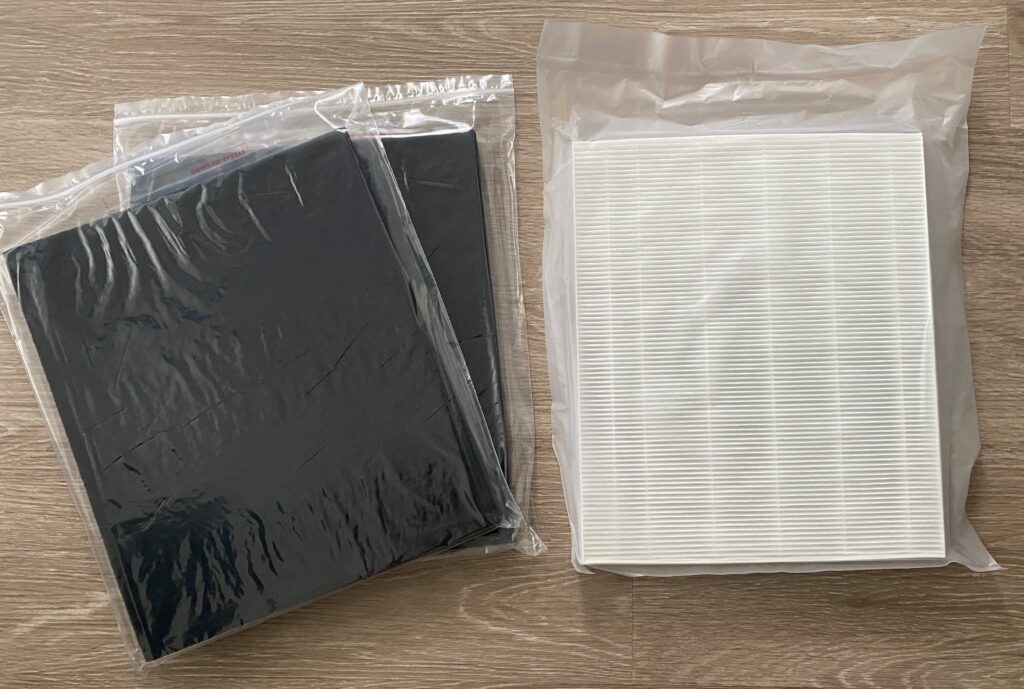
Bottom Line
In the year that I have had this unit, I have enjoyed much better air quality inside my home. I know not only because the lights on the unit let me know and the app history shows me, but I have experienced a drastic reduction in allergy symptoms this year compared to the year prior. This despite dry, windy conditions that blew pollen and other irritants around in addition to the worst smoke I’ve experienced since moving here almost two years ago. I also stayed healthy all winter; no colds, no flu, and most importantly, no COVID.
There are many air purifiers on the market with different models for different needs. There are devices for small, medium and large spaces. Some devices are specifically designed for pet owners or smokers. IKEA recently launched a new product that has an air purifier built into an end-table so it is less conspicuous. You may even be able to add one to your HVAC system.
With the amount of PM2.5 in the air these days, it is becoming a necessity to have something that can filter it out of the air you breathe. I strongly recommend that anyone that has allergies or is sensitive to changes in air quality find a unit that works for you. Your lungs, nose and eyes will thank you for it.
Last Updated on October 6, 2024
